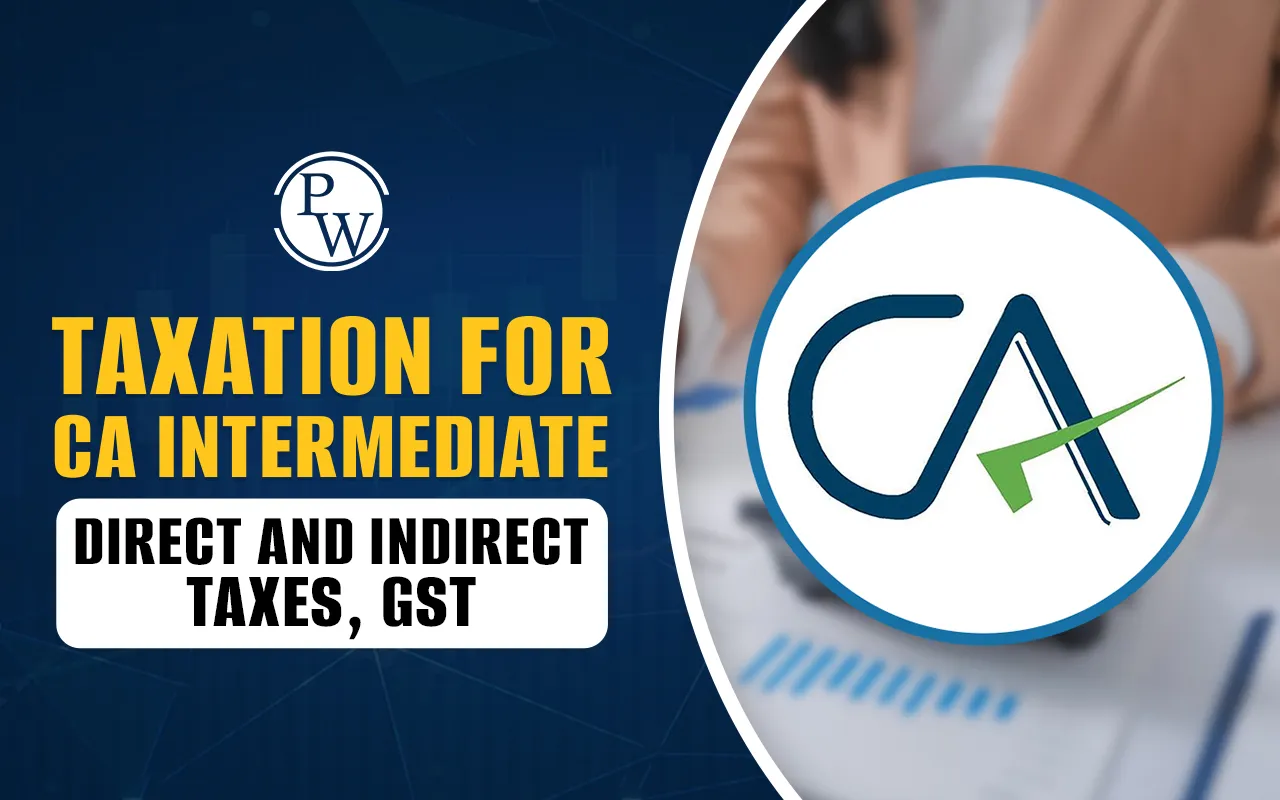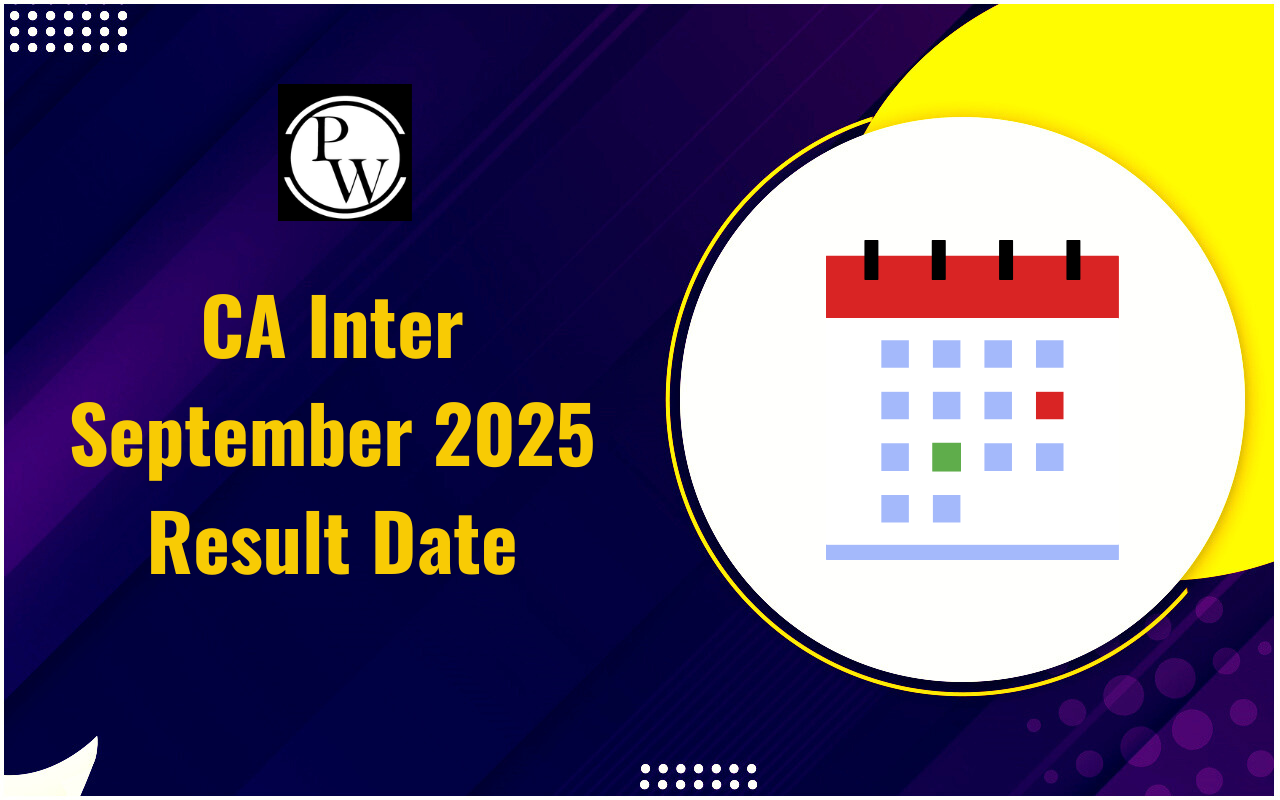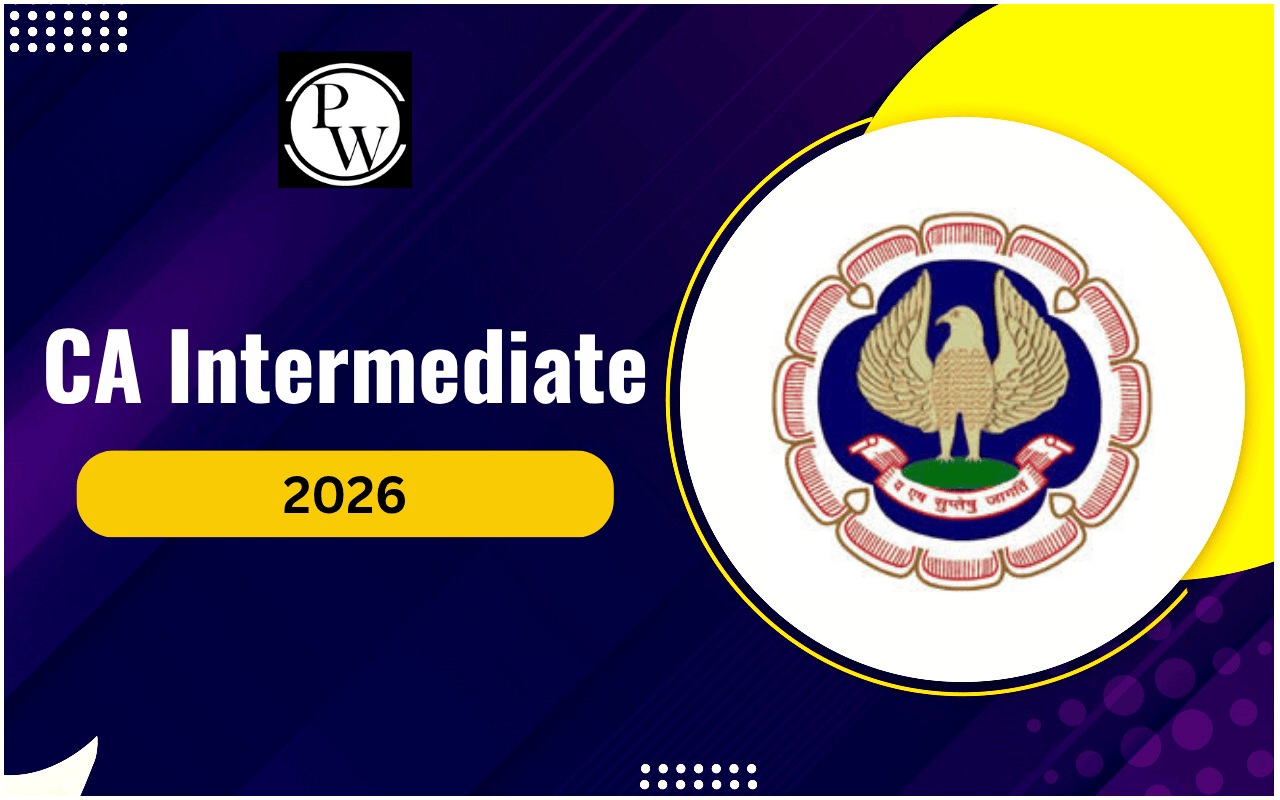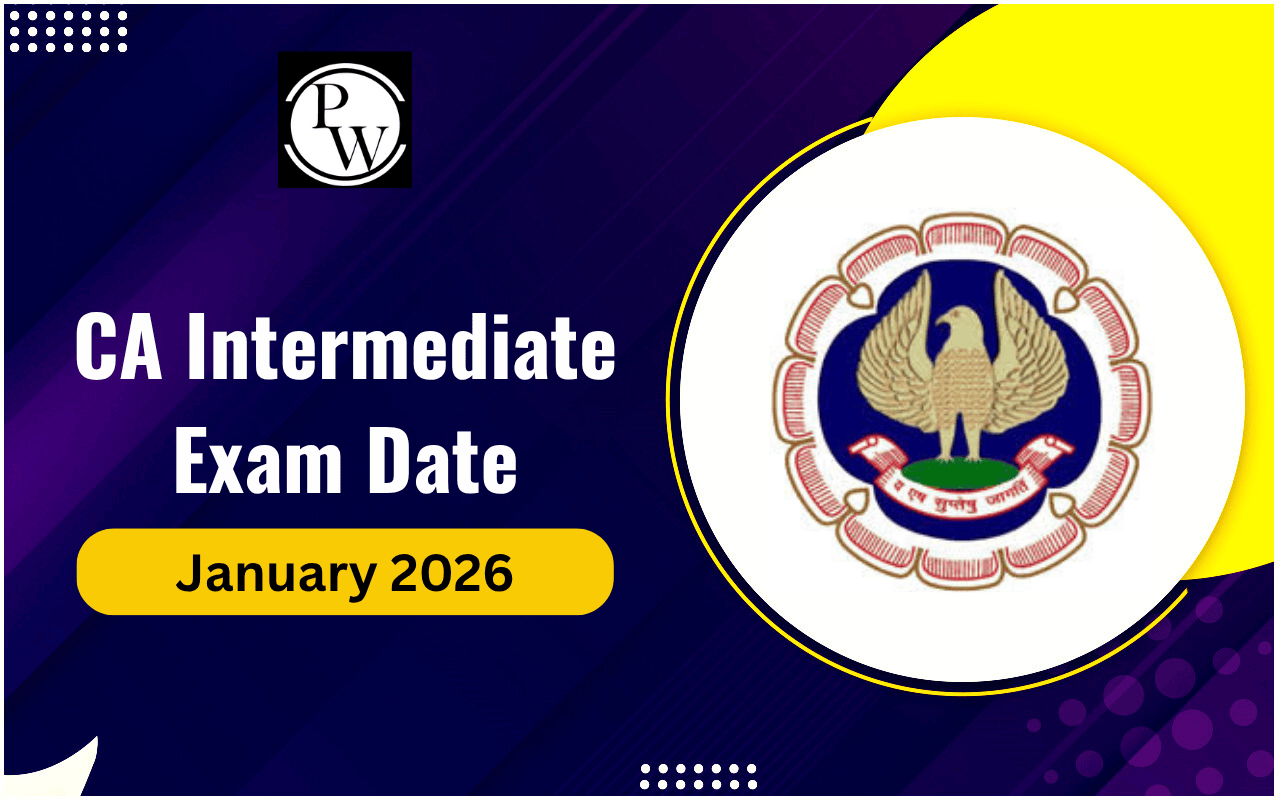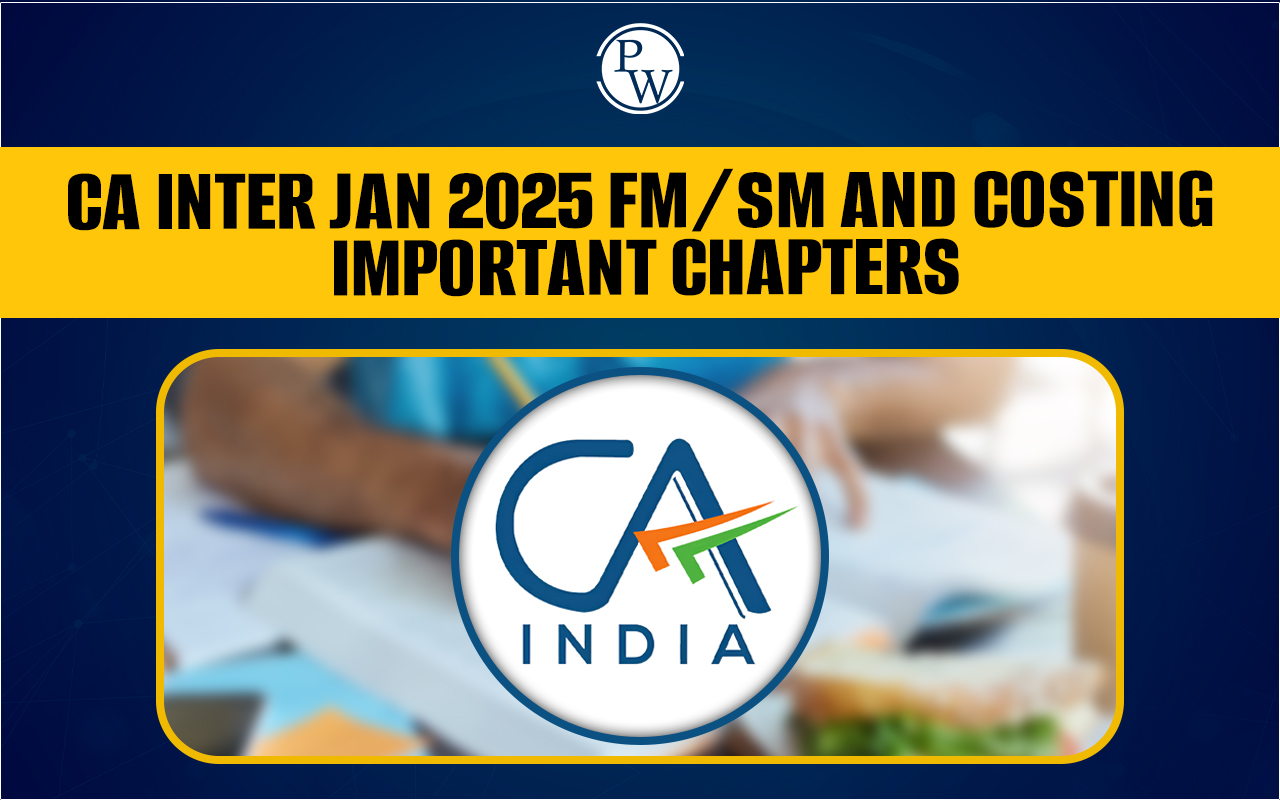

Taxation for CA Intermediate: Taxation is a core subject in the CA Intermediate curriculum. Taxation plays a crucial role in shaping a professional's ability to interpret and apply tax laws in real-world scenarios.
The CA Intermediate Taxation paper aims to develop a strong foundation in both direct and indirect taxation, offering students the analytical skills required to address complex tax matters. The syllabus is thoughtfully divided into two main sections. Section A focuses on Income Tax Law, covering individual and corporate taxation, capital gains, income from house property, and applicable deductions and exemptions. In contrast, Section B is dedicated to Goods and Services Tax (GST), India’s unified indirect tax system, encompassing key topics such as registration procedures, tax computation, input tax credit, and compliance protocols.
Both sections of Taxation for CA Intermediate provide a well-rounded understanding of the Indian tax framework. This way, students learn to make informed decisions and offer practical tax solutions in professional practice.
What is Direct Taxes?
Direct tax is a form of taxation where the liability to pay rests entirely on the individual or organisation earning the income. It is not transferable to another party and is paid straight to the government. This kind of tax is designed to be progressive, meaning those with higher incomes contribute a greater percentage of their earnings compared to those with lower incomes.
Direct tax may seem straightforward, but it can involve complex rules, especially for corporations operating across multiple sectors. Due to the complexities, many businesses rely on qualified professionals who can effectively streamline compliance and reporting processes.
Types of Direct Taxes
Direct tax includes several major categories, such as individual income tax, corporate income tax, capital gains tax, estate tax, and property tax. Each type targets a specific source of income or ownership. Here is the explanation of various types of direct tax:
-
Personal Income Tax: This is applied to wages, salaries, investments, and other personal income. This tax is structured in progressive brackets. Taxpayers are charged at rates that increase with their income level.
-
Corporate Income Tax: Charged on the profits of registered companies, both public and private. This tax forms a major chunk of India's direct tax revenue and is regulated under the same Act.
-
Minimum Alternate Tax (MAT): It has been introduced to bring “zero-tax” companies into the tax net. MAT ensures companies with book profits pay a minimum level of tax, even if their actual liability is reduced through exemptions.
-
Alternate Minimum Tax (AMT): Similar to MAT, AMT is applied to non-corporate entities like LLPs and partnership firms to prevent tax avoidance through deductions and incentives.
-
Capital Gains Tax (CGT): It is imposed on profits from selling capital assets such as property, stocks, or jewellery. Gains are categorised as short-term or long-term based on the holding period of the asset.
-
Securities Transaction Tax (STT): This tax is levied at the time of trading in listed securities directly at the point of transaction to curb tax evasion. The securities may include shares, mutual funds, etc.
-
Professional Tax: This is a state-level tax on income earned through profession or employment. It applies to salaried individuals and professionals like doctors, lawyers, and accountants.
-
Digital Tax: Aimed at taxing digital companies operating without a physical presence in India. It covers payments to foreign companies for online advertising and digital services.
What is Indirect Tax?
Indirect tax serves as a key component of a nation's fiscal framework. It is imposed on the consumption of goods and services rather than directly on income or profits. Indirect taxes are collected by sellers or service providers during transactions and then remitted to the authorities. The final tax burden is borne by the consumer, as it is included in the price of the product or service.
For example, when purchasing an item, consumers not only pay for the product itself but also an added tax amount such as GST or VAT. This amount is collected by the seller and forwarded to the government. While this system ensures broader tax collection coverage, it tends to be regressive, affecting lower-income individuals more as the tax rate remains the same regardless of the buyer’s financial status.
Indirect taxes are embedded in routine transactions and are passed on from businesses to consumers. Understanding their implications is vital for businesses to ensure compliance, accurate pricing, and financial forecasting.
Types of Indirect Tax
There are various types of indirect taxes, each serving a specific regulatory or fiscal purpose. These are:
-
Goods and Services Tax (GST): A unified tax on the supply of goods and services, replacing multiple previous indirect taxes in India.
-
Value Added Tax (VAT): A multi-stage tax applied at each point of sale. It is applied to the value added to a product at every stage of the supply chain.
-
Excise Duties: Taxes imposed on the manufacture or production of certain goods, such as alcohol, tobacco, and petroleum products.
-
Customs Duties: These are applied to goods imported into or exported from a country, aimed at regulating trade and generating revenue.
-
Tariffs: These are taxes imposed specifically on imported or exported goods, influencing trade balances and protecting domestic industries.
What is GST in India?
India’s taxation framework saw a significant overhaul with the launch of the Goods and Services Tax (GST). GST replaced numerous indirect taxes such as service tax, VAT, and excise duty. Officially enforced on July 1, 2017, after being passed in Parliament on March 29, 2017, GST introduced a unified and transparent system aimed at simplifying the indirect tax structure across the country.
This destination-based tax is applied to the supply of goods and services at each stage of the value chain, but the burden ultimately falls on the end consumer. GST is designed to eliminate the cascading effect of taxes and ensure that tax is levied only on the value addition at each stage.
Types of GST in India
To ensure smooth revenue sharing between different levels of government, GST is categorised into four key types:
-
Central Goods and Services Tax (CGST): Collected by the central government on intra-state transactions.
-
State Goods and Services Tax (SGST): Collected by the respective state governments on intra-state supplies.
-
Integrated Goods and Services Tax (IGST): Applied to inter-state transactions and imports, with revenue shared between the centre and destination state.
-
Union Territory Goods and Services Tax (UGST): Levied on transactions within union territories, functioning similarly to SGST.
Taxation for CA Intermediate Chapter-Wise Weightage
Understanding how marks are allocated across different topics in the CA Intermediate Taxation paper is crucial to building an effective study plan. The subject is divided into two primary sections, Income Tax Law (60 marks) and Indirect Taxation (40 marks). Each section covers multiple chapters across separate modules.
Here is the chapter-wise weightage of Taxation for CA Intermediate based on previous exams:
| CA Intermediate Taxation Chapter-wise Weightage | ||
| Section | Module/Chapter | Expected Marks |
| Section A: Income-tax Law (Total: 60 Marks) | ||
| Module 1 | Chapter 1: Basic Concepts | 4 Marks |
| Chapter 2: Residence and Scope of Total Income | 4 Marks | |
| Chapter 3: Incomes which do not form part of Total Income | 4 Marks | |
| Module 2 | Chapter 4: Heads of Income | 10–14 Marks |
| Module 3 | Chapter 5: Income of Other Persons Included in Assessee’s Income | 4–6 Marks |
| Chapter 6: Aggregation, Set-off & Carry Forward of Losses | 4–6 Marks | |
| Chapter 7: Deductions from Gross Total Income | 4–8 Marks | |
| Chapter 8: Computation of Total Income and Tax Payable | 8–10 Marks | |
| Chapter 9: Advance Tax, TDS & Intro to TCS | 4–6 Marks | |
| Chapter 10: Filing Return of Income & Self-assessment | 4 Marks | |
| Section B: Indirect Taxes (GST) (Total: 40 Marks) | ||
| Module 1 | Chapter 1: Introduction to GST in India | 2–4 Marks |
| Chapter 2: Supply under GST | 4–8 Marks | |
| Chapter 3: Charge of GST | 4–6 Marks | |
| Chapter 4: Exemptions from GST | 4–8 Marks | |
| Chapter 5: Time and Value of Supply | 10–12 Marks | |
| Module 2 | Chapter 6: Input Tax Credit | 8–10 Marks |
| Chapter 7: Registration | 4 Marks | |
| Chapter 8: Tax Invoice, Debit/Credit Notes, E-way Bill | 4–6 Marks | |
| Chapter 9: Payment of Tax | 4 Marks | |
| Chapter 10: Returns | 4 Marks | |
| Also Check | |
| Activity-Based Costing (ABC) | Lean Accounting |
| Equity Capital Markets | Direct Tax |
| Business Valuation | Transfer Pricing |
Taxation for CA Intermediate FAQs
Is taxation difficult in CA Inter?
Is a tax calculator allowed in CA Intermediate?
Which Taxation chapter carries highest weightage in CA Inter?
Which section is tough in CA Inter Taxation?
How to prepare for CA Inter taxation?

